
If snowdrops flowered in midsummer we would probably barely notice their presence. We might even find them a nuisance the way they clump up so quickly and leave behind a great mound of boring foliage which must be religiously left to feed the cursed little bulbils for next year. I can almost feel myself reaching for a spade…
But snowdrops have the immense good sense to flower at a time when we are all sick of cold cheerless days of frost, when their promise of better things to come make us go a little bit potty about them.
Snowdrops are the ultimate vernal species, adapted to growing in deciduous woodland where they can get up and away before the leaf canopy closes over them blocking out the light they need to photosynthesise and store starch for next years effort.
Anyone who doesn’t believe snowdrops thrive best in woodland should, as I do frequently, take a trip to the Hebridean island of Islay. Here the woods are transformed to a late winter wonderland that mainland gardens, hoping to extend their season of paying visitors by creating ‘snowdrop walks’, can only dream of.
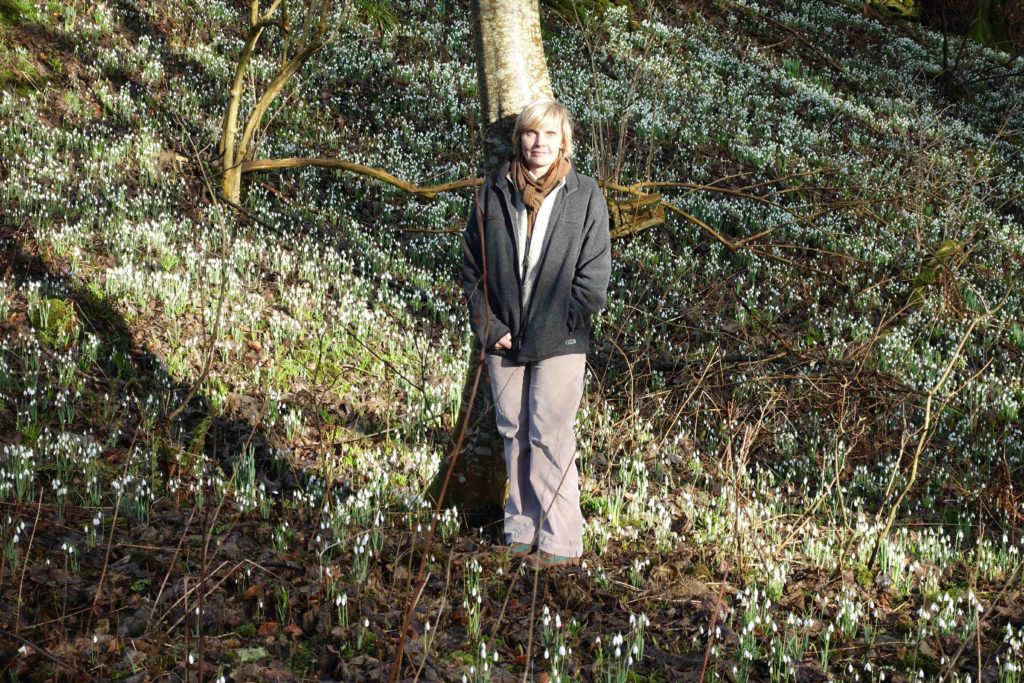
The other thing I like about snowdrops (Galanthus) is the eccentric following they attract. Galanthamania started in the Victorian era when aristocratic plantsmen and women would gather in each other’s gardens to examine and swap obscure selections of the species.
To my eye even modern day gatherings of galanthophiles tend to resemble the cast of an Agatha Christie novel with the kind of upper class dottiness that I think the Brexiteers probably had in mind when they claimed they wanted to make Britain great again.

You are so right, Laura, about snowdrops wisely not flowering at other seasons of the year when there are more glamorous candidates to draw the eye. And they are basically…well..white – with all the ice and frost about in February, where is the sense in that? With my Latin teacher hat on, I need to point out that in Ancient Greek, ‘gala’ means ‘milk’ and ‘anthos’ means ‘flower’, and by far the most common species is ‘nivalis’ which in Latin means ‘snow-white’ – I think you are getting the gist.
I can’t even bring myself to discuss the abominations that are yellow snowdrops – I suggest that you should avoid them in the same way that you should avoid yellow snow.
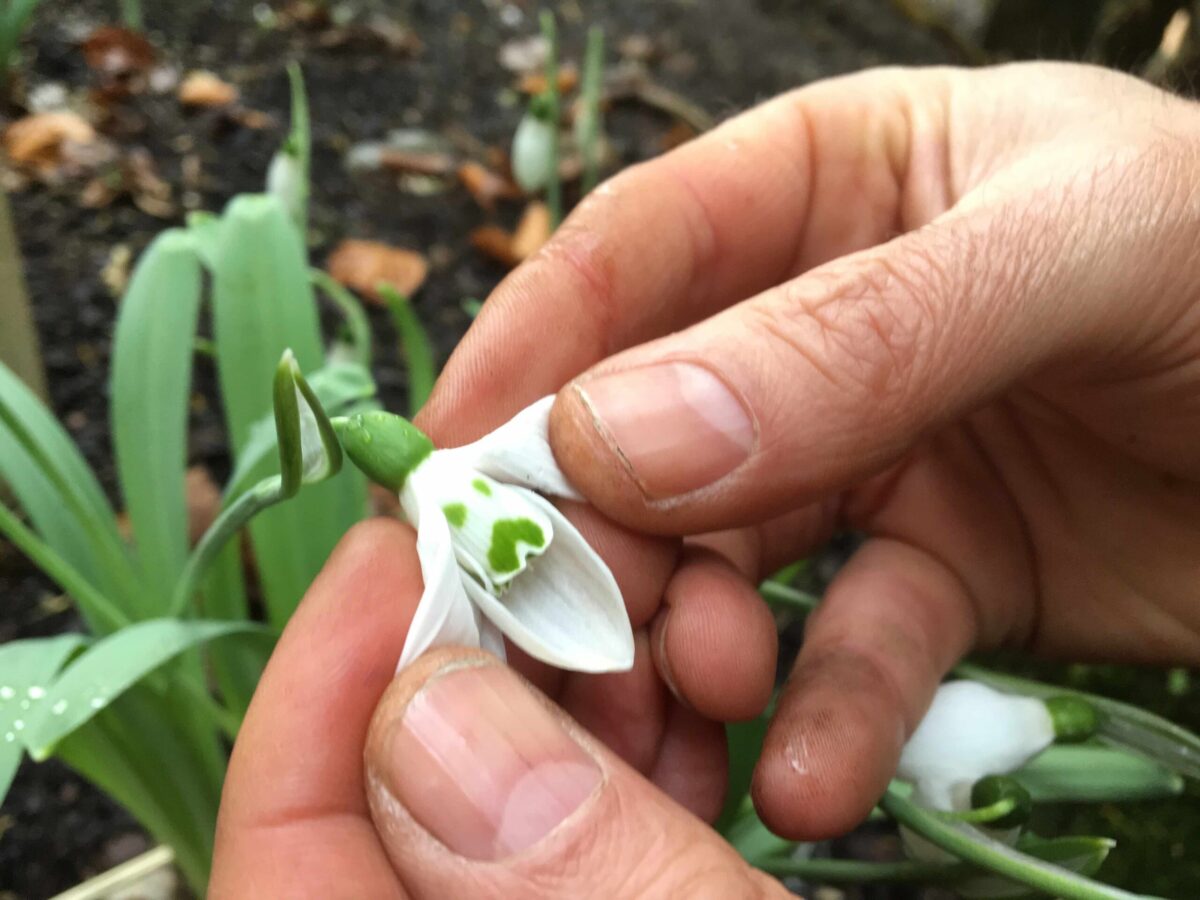
Snowdrops are sometimes suggested for decorative winter pots – please don’t bother. They really don’t like it and go into a usually terminal sulk; the wonderfully personable G. ‘Grumpy’*, pictured, looks like potted snowdrops obviously feel. Use white crocus, mini- narcissi or little irises instead.
There is always a lot of hoo-ha each year about splitting and replanting snowdrops ‘in the green’ i.e. still with leaves and roots on. But honestly, you don’t have to. The roots are very likely to become damaged that way, whereas dividing and moving the little dormant bulbils in July will do no harm at all. Just don’t give them time to twiddle their thumbs on the potting bench before deciding where to plant them. Some gardens like Colebourne Gardens (styled ‘England’s Greatest Snowdrop Garden’) use only this method, with complete success.

It’s no surprise my sisters are snooty about snowdrops – they are typically testy about anything that horticultural Philistines like me can grow, (and I feel Laura is curiously lofty about Brexiteers given that she’s a Mail on Sunday reader – ‘I only get it for the finance section’ :0!)
Of course both the girls are bit older than me so if ‘cutting edge’ is more your thing than ‘old school’ pedantry, stick with me.
According to garden writer Val Bourne, Scotland is big on snowdrops because so many Scottish regiments fought in the Crimean War and returned with bulbs of Galanthus plicatus (native to that region). They thrived in the Scottish climate and hybridised with the local G. nivalis (so if Laura had done a little more research she wouldn’t have been surprised by her Islay experience).
I went to Cambo Gardens near St Andrews, Fife a couple of years ago where their 240 varieties of snowdrops are far more interesting than the area’s golfing attractions.
The then Head gardener Elliot Forsyth created a stunning winter garden there. He demonstrated to me how the two (or sometimes three) snowdrop leaves – correctly termed ‘spathe’ – protect the flower as it emerges and have a natural antifreeze in their tips to protect it from the harsh conditions.
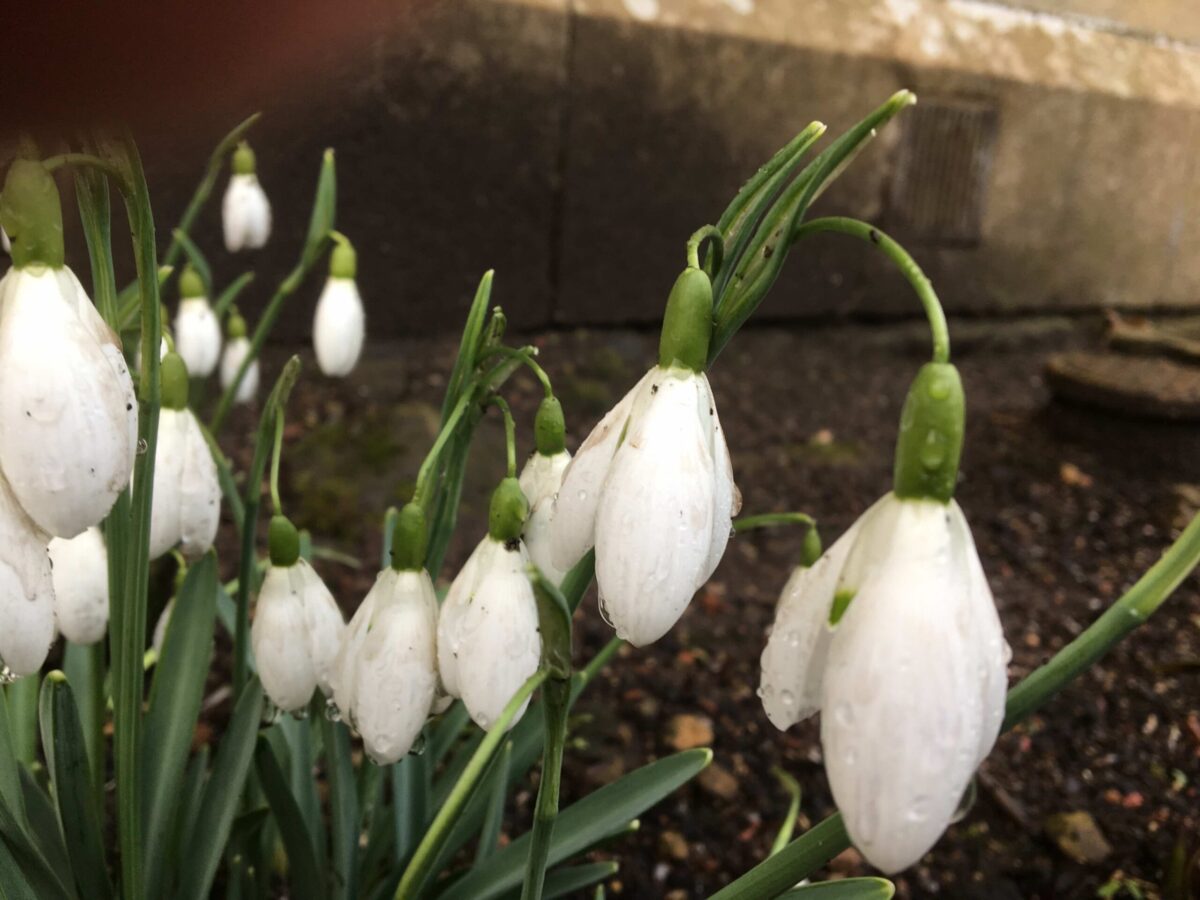
He showed me particularly the elongated pedicel of G. plicatus ‘Sibbertoft Manor’ which allows the flower to bounce, like a gorgeous pendulum, pictured. And (again, what is wrong with my sisters?) he showed me the fast-spreading, knock-out yellow snowdrop G. nivalis ‘Sandersii‘ ex Lowick featured at the top of our blog. Isn’t it gorgeous? I really have to keep an eye on the advice my sisters are giving you sometimes..
*G. ‘Grumpy’ is one of the star snowdrops at Cambo. Very popular with children!
Louise’s Great Plant this Month shows a another attractive winter star.
NB If you’re not already a subscriber and you’d like a bit more gardening chitchat from the3growbags, please type your email address here and we’ll send you a new post every Saturday morning.
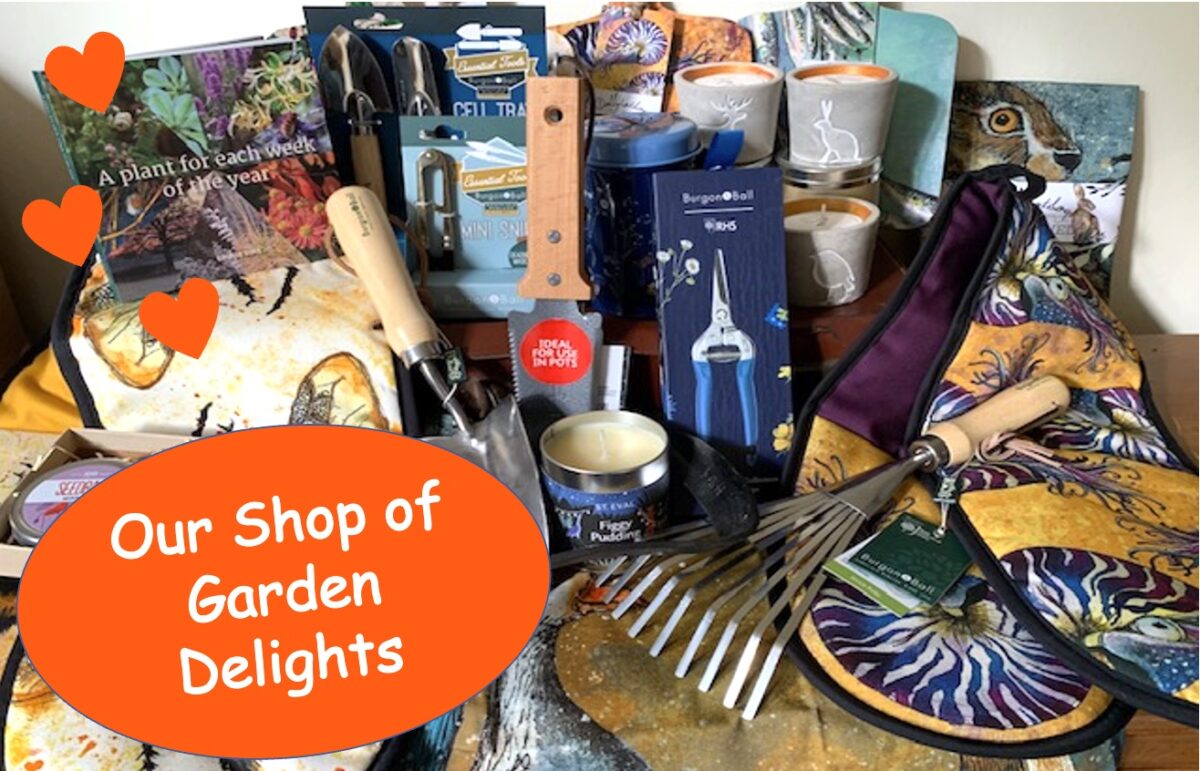
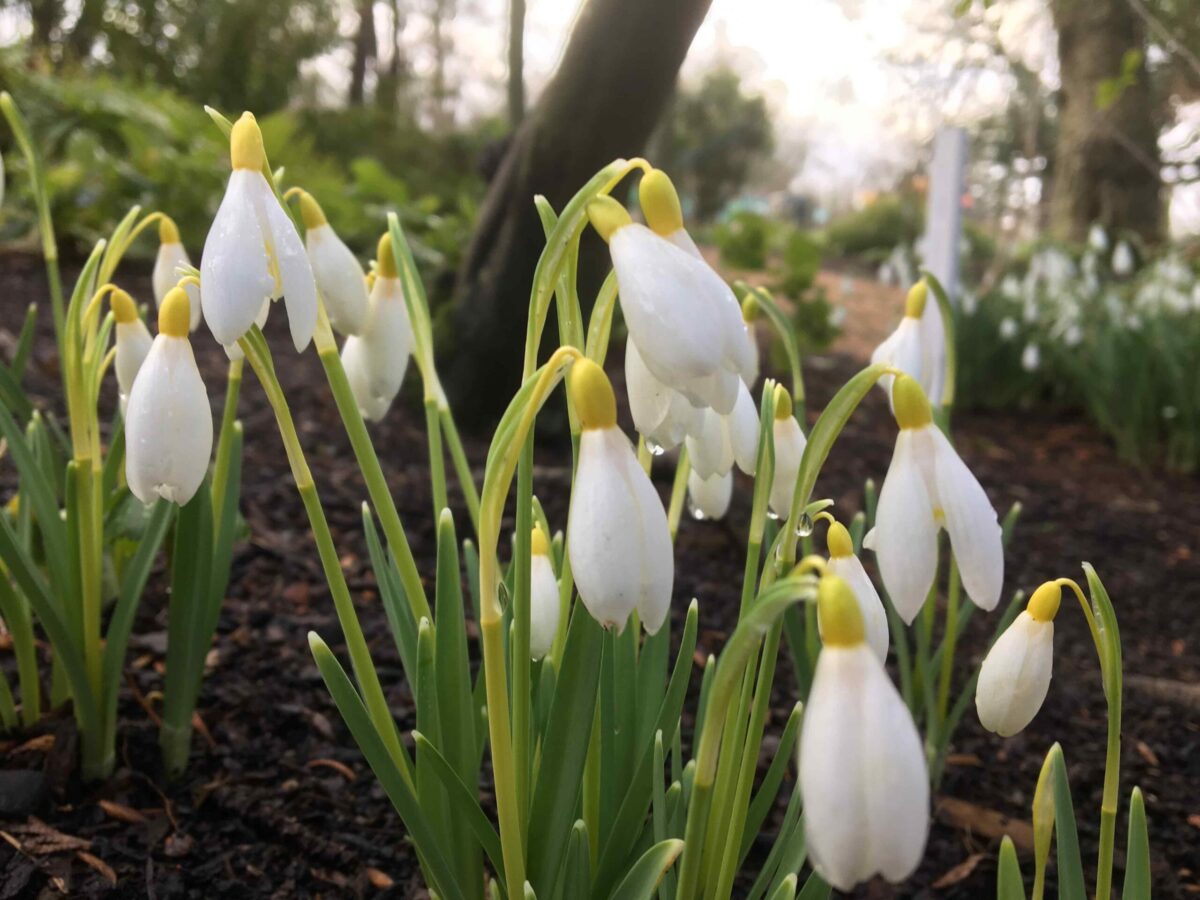
2 replies on “Battle lines are drawn over snowdrops”
LOVE your blog! Informative, ( I shall never divide my snowdrops after blooming again, Elaine), very well written , and the gentle ‘ribbing’ between siblings is just highly amusing .
3 clever girls!!
PS. Where do so many of my spring bulbs disappear to – I have to re-stock after a year or two, yet, I am on chalk, so, no danger of rotting .
Hi Teda – really glad you like the blog! We growbags think that Caroline might have (probably accidentally) hit the nail on the head with her answer to your problem:
I don’t know where spring bulbs disappear to, Teda – I have the same problem. I have been blaming the cat (he looks shifty and he doesn’t like me), but it could be squirrels or mice. I think we just have to plant more and more until the rodents die of obesity.